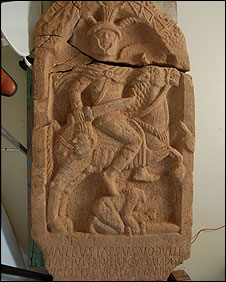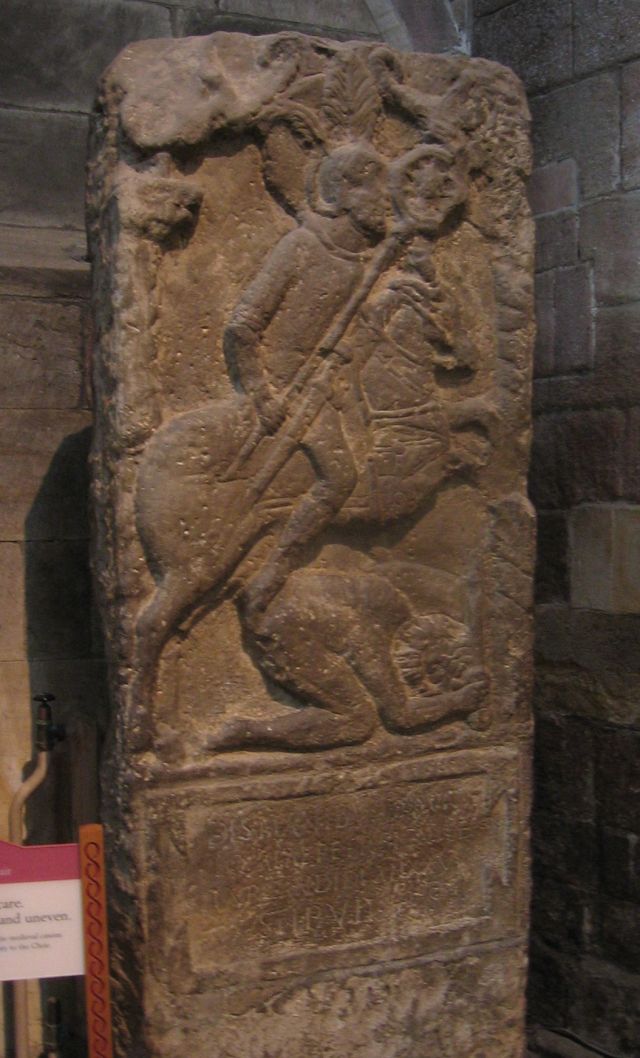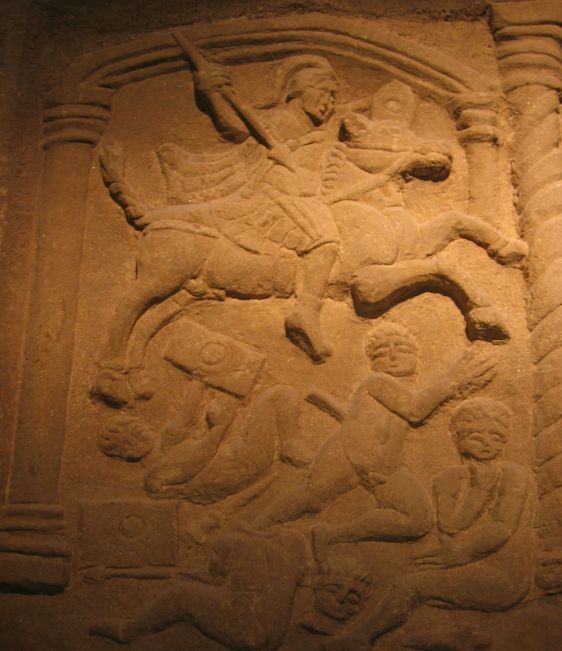Part 1 here
Part 2 here
Part 4 here
Thirdly, we have a letter I wrote last year to Foundation, and which appeared in issue 101, pp. 5-9. My thanks to current editor Graham Sleight for permission to reproduce it here. Looking back at this letter, I now think it’s rather grumpy, but never mind.
I read with interest Elizabeth Rosen’s article on Watchmen in Foundation 98 (“‘What’s that you smell of?’ – Twenty years of Watchmen nostalgia”, pp. 85-98). Whilst I have always been less convinced than most that Watchmen is an unalloyed triumph, it is not on these grounds that I wish to comment on Rosen’s piece. And I find her reading of Watchmen as both a critique and an example of nostalgia for the superhero comic, and her view that the development of superhero comics since Watchmen brings a new resonance to that nostalgia, interesting, and I don’t disagree with either point. However, a number of observations occur to me.
If Watchmen is all about nostalgia, then one of the most important aspects of the comic is its origins in a commission to rework the Charlton heroes, characters from the late 1960s, fondly-remembered by many comics fans. Yet Rose delays mention of this until p. 93, three-quarters of the way through the article. This seems odd, given that the original Charlton characters dictated the characteristics, to one degree or another, of the leading players in Watchmen, especially Rorschach.
This seems symptomatic of a lack of context provided in Rosen’s paper. Watchmen did not spring out of nothing. Alan Moore had already been deconstructing the notion of the superhero for some years, most notably in Marvelman (later retitled Miracleman) from 1982, and then in some of his earlier work for DC, especially ‘Roots’, the story in Saga of the Swamp Thing #24 (1984) that guest-starred the Justice League of America. Of these Rosen only mentions Miracleman, and then only very briefly. More time is given to a comic contemporary with Watchmen, Frank Miller’s Batman: The Dark Knight, as the other foundation stone of revisionist superhero comics (though for all its revisionist gloss, Dark Knight is fundamentally true to the character as established by Bob Kane and Bill Finger). Again, context would help. Though Moore would not have read Dark Knight before starting on Watchmen, Miller was working with themes he had first drawn out in his work on Daredevil (1979-1983). Moore was an avowed fan of this, and wrote a text piece for Marvel UK’s The Daredevils #1 (1983) on Miller.
In general, the atmosphere in superhero comics in the early 1980s was conducive to the development of more ‘relevant’ and ‘realistic’ stories. This was especially true at DC, who had a taken a creative lead by building upon the sort of sophisticated storylines that Chris Claremont had developed in his popular run on X-Men over at Marvel (beginning in 1975). Stories like Marv Wolfman and George Pérez’s two-part ‘Runaways’ (The New Teen Titans # 26-27, 1982-1983) and their later stories dealing with drug abuse may seem naïve now, but at the time they were groundbreaking and hard-hitting. Of DC’s output in these years, Rosen only mentions (in a footnote) Crisis on Infinite Earths (1985-1986), without giving a date, and in such a way that an unwary reader might not realize that it preceded Watchmen and Dark Knight.
One could further suggest that the notion of the ‘realistic’ superhero comic actually goes back to Denny O’Neill and Neal Adams’ Green Lantern/Green Arrow stories from 1970-1972. Or it could be traced back further to birth of the ‘Marvel Age’ in the 1960s, driven by Stan Lee and his collaborators, in particular Lee and Jack Kirby’s Fantastic Four (1961 onwards), which Rosen mentions in a footnote, and Lee and Steve Ditko’s Spider-Man (1962 onwards). These would be comics that Moore and Dave Gibbons would have read as youngsters, but though Rosen comments in a general way about their nostalgia for old superhero comics, she doesn’t mention them, leading me to wonder if she has read much of 1960s superhero comics herself. Many of these are now, through Marvel’s Essentials and DC’s Showcase lines, more easily available than they’ve ever been since first publication, allowing the reader to see the influence of, for instance, John Broome and Gil Kane’s Green Lantern (1959 onwards) upon Gibbons’ art and Moore’s sf stylings.
This lack of context means that when Rosen talks of the ‘Golden Age’ and ‘Silver Age’, a reader ignorant of comics might come away unsure of what the terms actually mean. I’m sure Rosen knows. But I think that the terms need explaining for the non-expert, with clear discussion of the collapse of the market for superheroes at the end of the 1940s, that ended the Golden Age, and the revival of that market in the late 1950s that began the Silver. (And surely the start of the Silver Age is more clearly datable than the ‘roughly’ 1959 she suggests – the first appearance of the second Flash in Showcase #4 in 1956 is usually, and I feel rightly, held as the first Silver Age superhero.)
A similar lack of context appears when discussing what came after Watchmen. Moore’s complaints about post-Watchmen imitators are noted, but no examples put forth. There is no shortage. Just staying at the quality end of the genre, there are John Smith and Jim Baikie’s New Statesmen (1988-1990), the various comics in the Stormwatch and Authority series (1993 onwards), and Mark Millar and Bryan Hitch’s The Ultimates (2002 onwards). As an example of what Moore calls ‘any poor wretched innocent Golden Age character … re-imagined’, one could point to Grant Morrison and Duncan Fedrego’s Kid Eternity [which I didn’t date in the original letter – it’s 1991]. John Byrne’s 1986 revamp of Superman is too early to be post-Watchmen (though the influence of Watchmen and Dark Knight is clearly felt in the 1992-1993 ‘Death and Return of Superman’ sequence), but is worth mentioning here as it was preceded by a two-part Moore story, ‘Whatever Happened to the Man of Tomorrow?’ (Superman #423, Action Comics #583), that features the nostalgia for superheroes that characterized Moore’s work when he returned to the genre in 1993. Even when Rosen does mention later comics, such as Marvels, Astro City and Kingdom Come, in the context of a return to nostalgia, no dates are given, so the reader cannot see how they relate to Watchmen (they are 1994, 1995-2000, and 1996).
There are also two points at which I think Rosen misreads the characters. It is true that Rorschach’s world view and rigid morality is often undercut by Moore, and that Moore does not intend the reader to accept it uncritically. But it’s not that simple. Rorschach is the only one of the main characters who emerges from the story with his moral integrity intact and uncompromised, even if this gets him killed. (It may be worth noting that the two deaths Rosen focuses upon, those of the original Nite Owl and Rorschach, are among the events that appear to me most jarringly imposed upon the narrative, rather than arising out of it naturally.)
In the first issue of Watchmen we see one 1940s hero, the first Silk Spectre, being sexually assaulted by another, the Comedian. As the story develops, it transpires that the two subsequently developed a relationship, and that the Comedian is the father of the Silk Spectre's daughter. For Rosen, this is problematic, and she says in a note that ‘[f]or a writer who has, in the main, been sensitive and outspoken in his work in his support of women, gay rights and other minority issues, [Moore’s] depiction of Sally [the Silk Spectre] falling in love with her rapist seems an incredible misstep.’ This appears dogmatic to me, as if a feminist writer cannot depict attempted rape (and, whilst not wishing to excuse the Comedian, his assault is interrupted before it becomes actual rape) and its consequences in any but the most black-and-white condemnatory terms. Moore is many things, but dogmatic is not one of them. He has always been interested in understanding what motivates people, even where their actions may not appear admirable. We all know that women stay with and continue to feel affection towards partners who sexually abuse them, however much we might wish it wasn’t so – is Moore wrong to depict that? Moreover, it seems strange to draw such attention to the way Moore presents attempted rape, whilst passing over the way in which the villain apparently gets away with murdering three million people, with no more consequence than vague hints that his plan might come unstuck. (I think in the final panel Moore is making a nod towards the 1950 Ealing comedy Kind Hearts and Coronets, but the difference is that the audience there knows that Dennis Price’s confession to murdering his family will undoubtedly be found, whilst there is every chance that Rorschach’s journal won’t be.)
One aspect of nostalgia that Rosen overlooks is the political nostalgia of Watchmen. In this world, Richard Nixon is still President in 1985. Gerald Ford is still Vice-President. Henry Kissinger is still Secretary of State. G. Gordon Liddy is still a presidential aide. The implication is that the entire 1973 Nixon administration is still in place. Moore would say that the presence of the near-omnipotent Dr Manhattan as a weapon in America’s arsenal has distorted US politics, but what he actually presents is a world in which politics has simply stopped. Alan Moore was twenty when Nixon resigned in 1974, and his motivation here seems to be a desire to play with the characters from when he first became politically aware.
Rosen’s piece seems insufficiently grounded in the history of superhero comics as a genre. I wonder if this might be because she has largely experienced superheroes through collections. One might deduce this from the title she uses for Miller’s Batman work – The Dark Knight Returns was originally the title of the first issue alone, though it has since been canonised as the title of the whole work. She certainly has only read Watchmen in the later collection. This is shown by her comment that Moore ends the work with Juvenal’s quis custodiet ipsos custodies. Though the source of the comic’s name, this quotation is nowhere to be found in the twelve original issues, which end with a line from John Cale’s ‘Santies’. The Juvenal was added when the work was collected. A better knowledge of the superhero genre might have meant that she would notice that the names mentioned in the Tales of the Black Freighter text piece are not just people who worked for EC comics, but more importantly were major figures in the development of DC Comics and their superhero lines – Moore’s point being that the existence of real superheroes killed off the market for superhero comics.
As I said, Rosen makes interesting points – but they would be so much better if they were grounded in a broader knowledge than the few creators she addresses.



